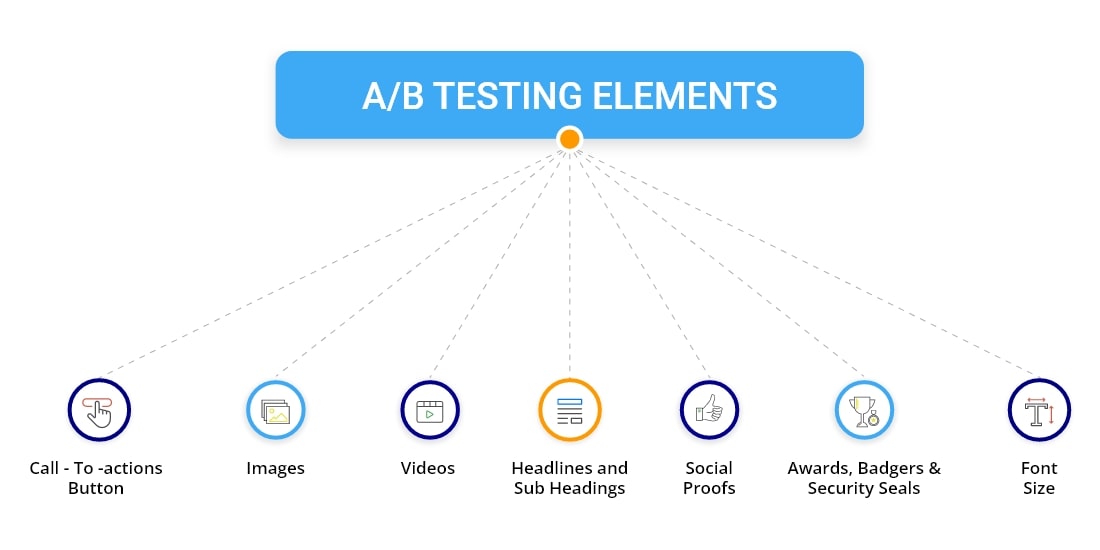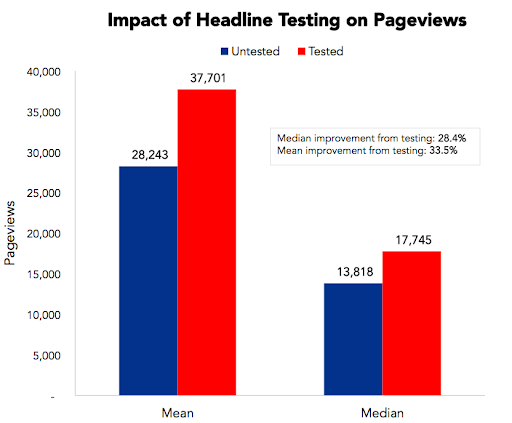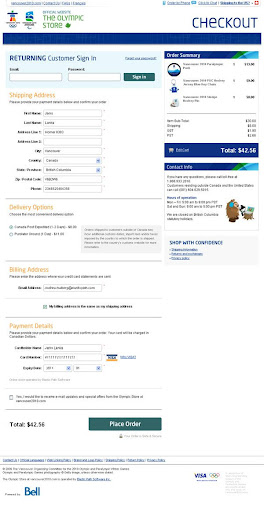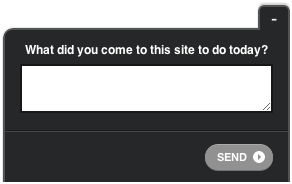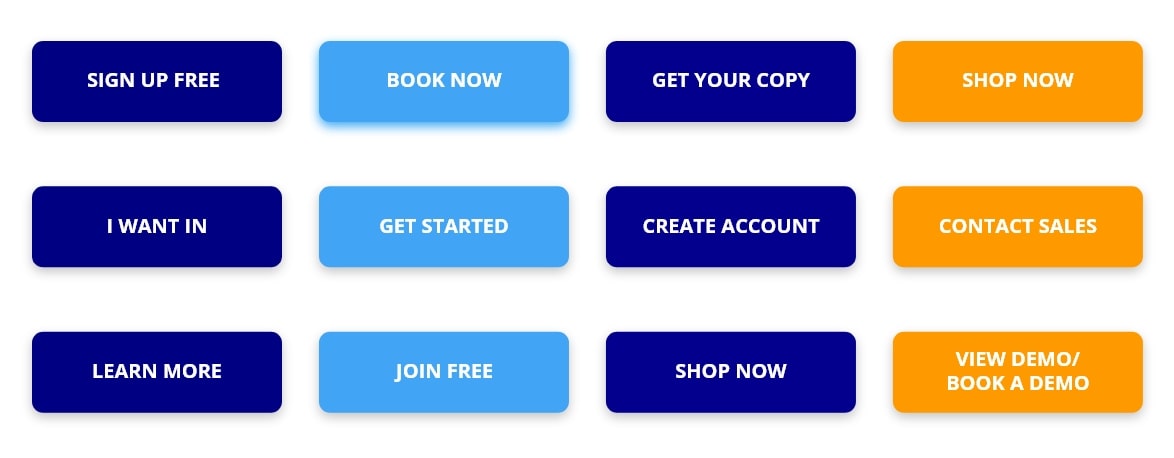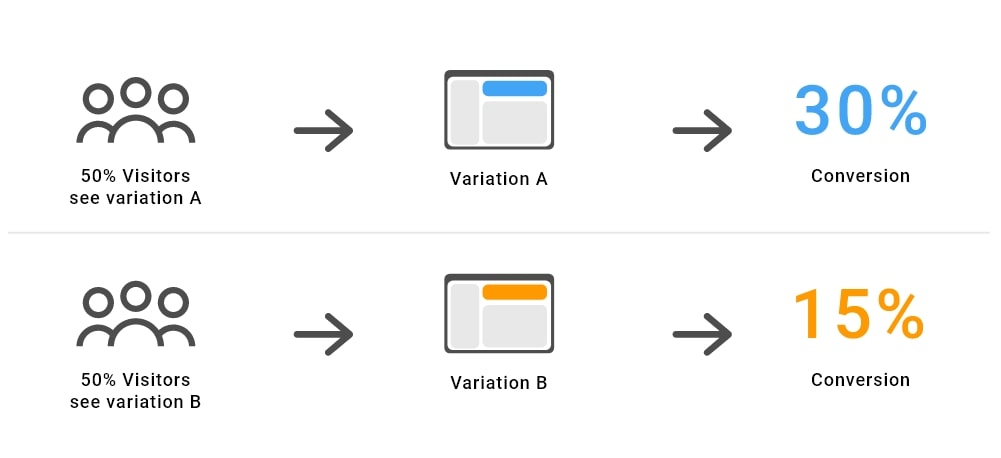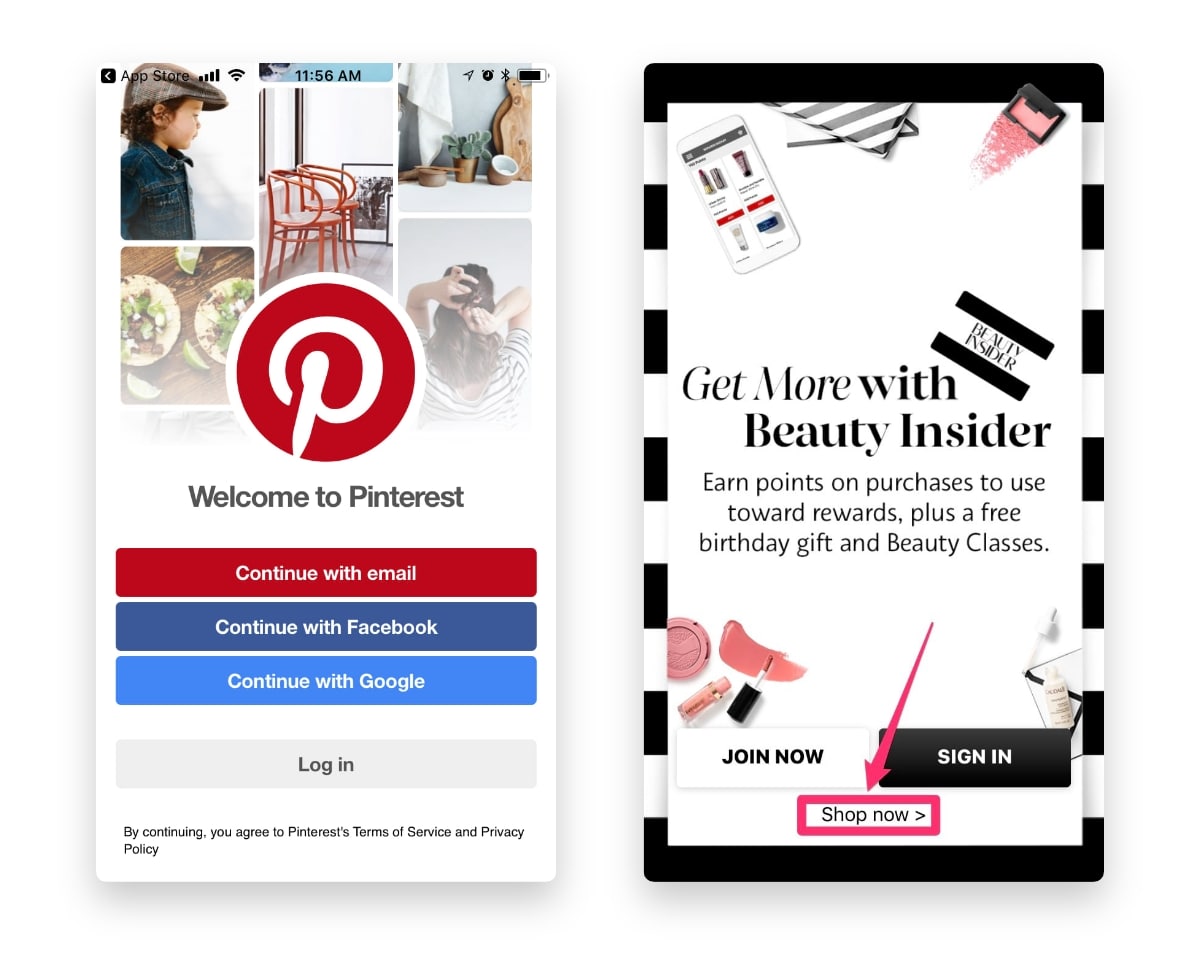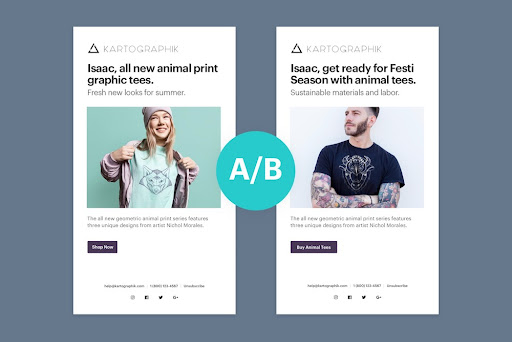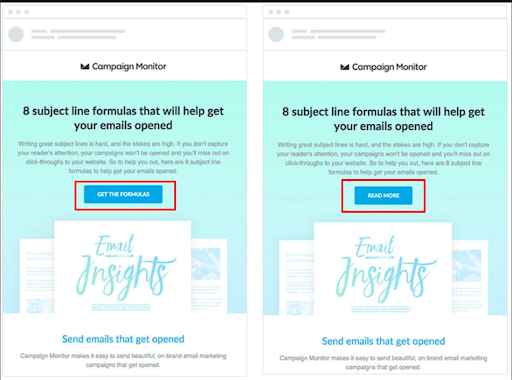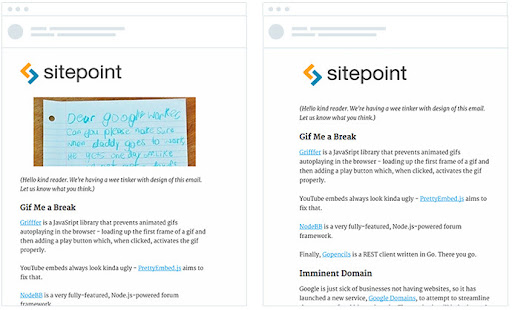Before looking into optimizing the page elements, you need to find the target pages. Most of the time, the highest performing landing pages are the best bet to the A/B test for optimization. These include high traffic pages, pages included/linked to your advertisement campaigns, and pages with high page value and conversion rates.
Once you have identified the page(s), you can A/B test different page elements and orientations to see which works best. Here are some common website elements to look for A/B testing opportunities:
1.) Headlines and Value Propositions
Website copy is one of the easiest things to test and potentially the most impactful. Here is study from priceonomics that shows the effect of headlines on page views:
Most website visitors only read the headline of a page before deciding whether to stay or leave. If you have landing pages with short on-site visits and high bounce rates, A/B testing your headline can be a way to improve the conversion rates of the page.
2.) Embedded Media (Videos, Gifs, Infographics, Etc.)
An image is worth a thousand words. Embedded media on your website plays a vital role in increasing customer engagement, making them familiar with your products, teaching them how to use the products, and much more.
Product images help visitors to visualize what the products look like. Videos such as tutorials provide self-help material. Infographics condense the information into easy-to-digest bits for the readers.
Therefore, it is worth running A/B tests on the embedded media to see what works for your visitors.
3.) Website Navigation
Are your visitors easily able to find what they are looking for? How flexible is your navigation menu? Will the navigation menu work better with page hierarchy or without it?
If people find your website confusing, how will they take the next step towards conversion?
Testing out different website navigation menu variations on leading pages will help optimize customer engagement and even divert the traffic to other useful pages. This can reduce page abandonment and increase conversions.
4.) Page Content
Content is king. Good content will increase conversions, while lousy content will drive away potential prospects. Therefore, page content must be structured appropriately and top-notch to engage visitors. There are different aspects of page content that are worth testing for optimization, such as:
- Page Layout and length
- Background Images and Patterns
- Navigation Links
- Number of Columns
You can test between long-form and short-form copy, single column vs. double column layout, changing background image to make the page more aesthetically pleasing, etc., to find the best combination that works for your visitors.
However, don’t test multiple aspects simultaneously, or you won’t know which changes caused the observed impact and which did not.
Kiva.org, a non-profit organization, increased the conversion rate by 11.1% by changing the content on its landing page. They added social proofs, statistics, and FAQs to the page. You can see their original landing page on the left and the test variation on the right in the image below.
5.) Position and Orientation of Various Elements
Are your actionable buttons and links adequately placed on the page? Is the free-trial button too far down the page? Will putting it towards the top increase the click-through-rate? Similarly, should you show the lead form at the top of the page or after the features section?
Should your promotional offer banner be below the ‘Buy Now’ button or at the top of the page?
There are numerous variations that you can A/B test to find the optimum position of your CTAs and other elements. A precisely placed CTA element can increase visitor engagement, drive more traffic, reduce bounce rate, and prompt visitors to take action.
6.) Lead Forms
Does your business rely on generating leads by collecting visitors’ information such as email address, contact number, etc.?
If it does, you can A/B test your contact us page and lead forms. The elements to A/B test on these pages can be the headline, CTAs, number of fields in the form, or the data you’re asking for. Optimizing the website forms can help you identify new prospects for your business.
7.) Checkout Page
If you’re selling something online, then shopping cart abandonment is the bane of your existence. A/B testing can help improve your shopping cart conversion rate. How? Simply test variations of your checkout pages to find those that have the highest conversion rate.
You may find that simple changes, such as adding a customer service number or return guarantee, can improve conversion rates.
Asking for customer feedback can help you build the hypothesis for your A/B tests. Add a simple survey to gauge customer satisfaction after they place the order. Survey customers who abandon the cart to uncover unseen issues with prices, payment options, etc. Test between single-page checkout and normal checkout process. Test the efficacy of the guest checkout feature.
Posing the right questions will help you collect accurate information to run A/B tests.
Examples:
- Is there anything preventing you from making the purchase at this point?
- What persuaded you to purchase from us?
- What was your biggest fear or concern about purchasing from us?
- If you did not make a purchase today, can you tell us why not?
- What would've convinced you to complete the purchase of the item(s) in your cart?
- Of these four options, what's the next thing you think we should build?
- How often do you use this feature?
- How would you feel if we discontinued this feature?
- What's the next feature we should build?
- How disappointed would you be if you could no longer use [Product/feature name?]
- Have feedback or an idea? Leave it here!
Collecting suggestions and feedback will let you design a data-backed hypothesis to optimize the checkout process and increase conversions.
Case Study - Elastic Path runs A/B test to decide between single page and multi page checkouts
Elastic Path A/B tested the new single page checkout against the multi-page checkout process to decide the winner. They equally split the traffic between the two pages and ran the test till each page received 600 transactions.
8.) Landing Pages for Advertising Campaigns
If you’re spending money to drive traffic to your website through ad campaigns such as Google Adwords and Facebook ads, improving the landing pages’ performance for these campaigns is a critical way to improve your return on investment for these campaigns. If you can improve your landing page’s conversion rate by 25%, you reduce your customer acquisition cost by 25% and increase your return on investment.
9.) Typefaces and Fonts
Make sure that your content is easily legible and, at the same time, pleasing to the eyes. It will increase visitors’ average time on the page and decrease the bounce rate. You can test different font families and sizes to find the winning combination.
10.) CTAs
The crux of battling out with a competition to design a beautiful and informative website is to increase your customer base. Therefore, your CTAs should be appropriately optimized to increase conversion rates. You can run tests for different positions, headlines, colors, fonts, etc., to find out what works for your visitors.
11.) Product Pricing Structure
Not all visitors are the same. Each visitor has a different requirement, budget, scope, etc. Some visitors may want to test the product before buying. Some may be looking for limited by a smaller budget.
Is your pricing structure flexible enough to cater to all of them?
Experiment with different pricing schemes to maximize signups. You can run tests to see if a free account plan increases CTR and conversions. Introduce multiple plans, such as premium, enterprise, etc., and test out how they work for different visitors.
Optimizing your pricing structure can prompt the visitors to take a step towards becoming your customers.
12.) Colors
You need to find the best colors for different page elements that drive maximum engagement. The CTAs should stand out from the rest of the page to make them more focused. Similarly, the background page color should be such that the text is easily legible.
Run tests to find the best colors that suit your website design. You can test different color schemes of an element like a CTA button in the same test to find the winning variation.
A/B Testing Use Case 1: Test Onboarding for Your SaaS Product or Mobile App
Smooth onboarding is an integral part of improving product adoption and customer retention process. If the users do not understand the features of your product or app quickly, they may quit and never come back.
That’s why it is crucial to test the onboarding flow for users to create a user-friendly experience for new users.
What can you test on the product onboarding process?
There are few things that you can check for the onboarding process, such as:
-
Placing the signup before or after the onboarding process.
Some users may not feel comfortable signing up immediately. You can test the position of the signup page by placing it at the start, end, or middle of the onboarding tour.
You can test the number of steps or screens that’ll be shown to the new users. If the onboarding tour is long, users may get frustrated.
-
Option to skip the onboarding process
Check whether your users want an instructional tour or not? If your product or app has an intuitive UI, they may not need an onboarding tour at all.
Check which works best — feature videos or message cards, in helping users to get started.
-
Colors of various elements
A/B test various color combinations and fonts to get the best mix that is legible and attracts users' attention.
Bonus Read: Question Guide For Product Owners
A/B Testing Use Case 2: Test the Sales Copy to Optimize Conversions
A sales copy is the document that brings users to your website and persuades them to make a purchase. It showcases the benefits of your products and other important information to attract customers.
It is essential to write killer sales copies to improve conversions on your website. The best way to produce the best sales copy is to test which variations work the best.
It lets you make incremental changes to the sales copy by optimizing one element at a time.
What can you test on your sales copy?
Like onboarding, there are multiple elements on your sales copy you can test for optimization, such as:
It is the most crucial element that grabs the users’ attention. You can try different wording, font, sizes, and format to find the one that works.
Body content displays the features/benefits of the product. Make it legible so the users can glance at it quickly. You can test the body length, bullet points, short paragraphs, and other formats to build the perfect content body.
The ultimate goal of your sales copy is to get users to click on the CTA button. Test with different positions such as below the headline, in-between the body content, bottom of the page, etc., to find the sweet spot. You can also try different CTA texts to see which produces the most clicks.
Image can make all the difference, especially in the case of a physical product. Test with different image types, the number of images, and their size to find the best combination.
Bonus Read: How to Create A Landing Page That Converts
